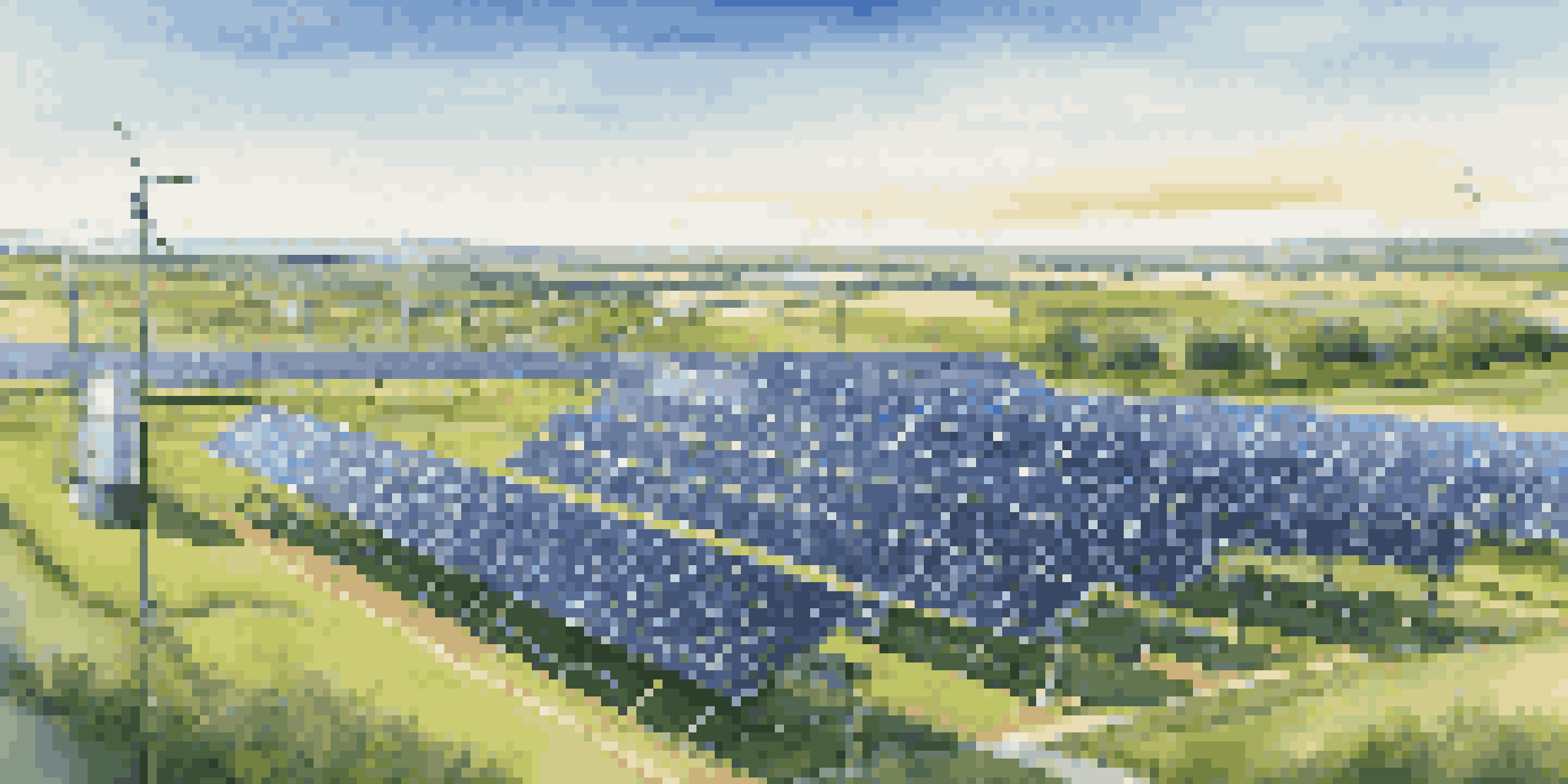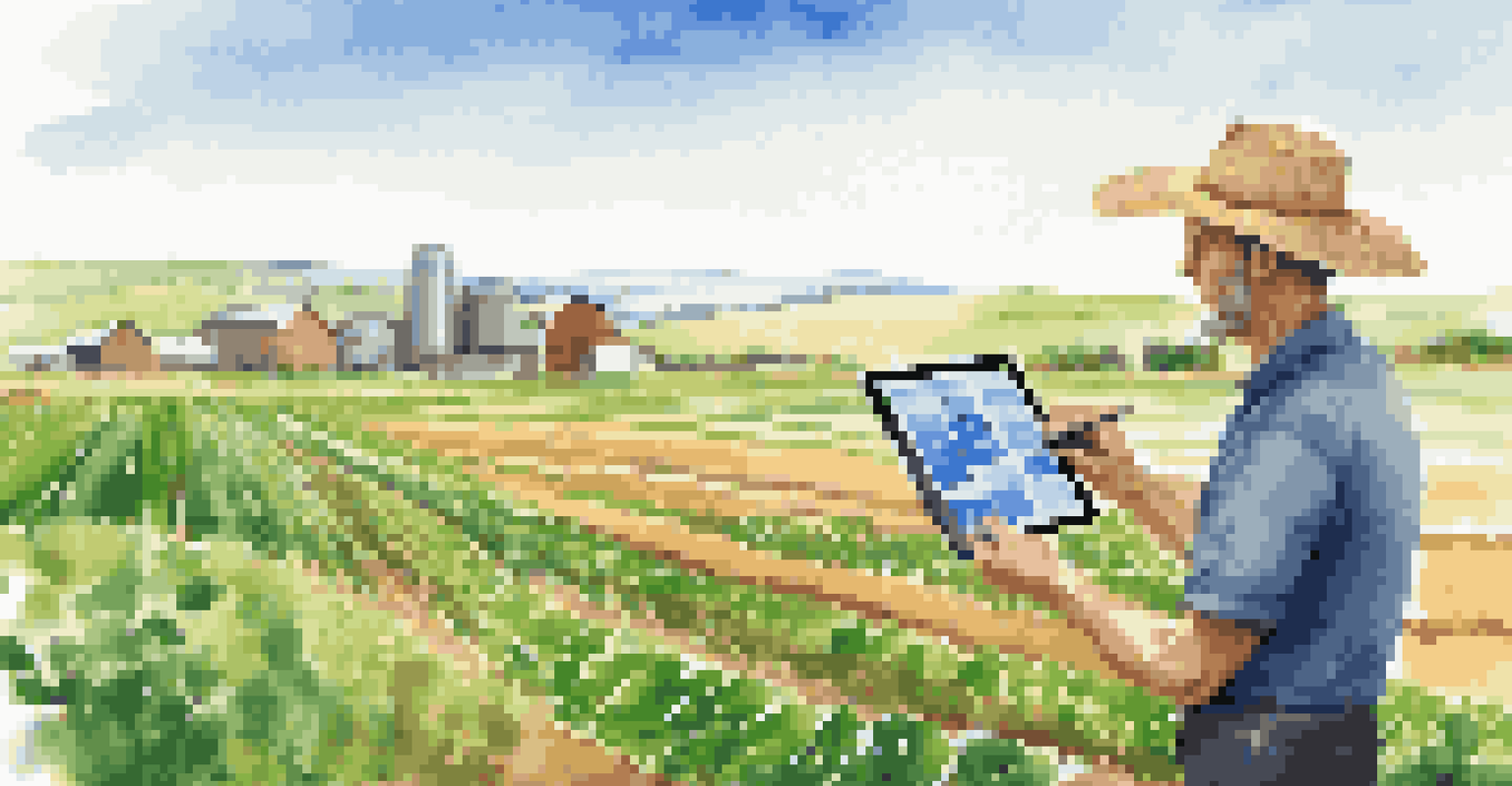Cyber-Physical Systems and Their Role in Climate Change Mitigation

Understanding Cyber-Physical Systems and Their Components
Cyber-Physical Systems (CPS) integrate computational algorithms with physical processes. They are designed to monitor and control physical systems through interconnected networks. Think of them as a bridge between the digital and physical worlds, allowing for real-time data analysis and decision-making.
The greatest threat to our planet is the belief that someone else will save it.
For instance, in smart grids, CPS can optimize energy distribution by analyzing usage patterns. This not only improves efficiency but also reduces waste, which is crucial in our efforts to combat climate change. By understanding how these systems work, we can better appreciate their potential impacts.
Moreover, CPS can be applied across various sectors, including transportation, agriculture, and healthcare. Each application has unique challenges and benefits, but all share the common goal of utilizing technology to enhance sustainability and reduce our carbon footprint.
The Role of CPS in Renewable Energy Management
One of the most significant contributions of Cyber-Physical Systems is in the management of renewable energy sources. By harnessing data from solar panels and wind turbines, CPS can optimize energy generation and distribution. This ensures that renewable resources are used efficiently and effectively.

Imagine a solar farm equipped with sensors that monitor sunlight and weather conditions in real-time. This information can help adjust the operation of the panels to maximize energy capture. Such intelligent systems not only enhance energy production but also contribute to a more stable grid.
As we shift towards greener energy solutions, CPS will play a pivotal role in integrating various renewable sources. This integration is essential for reducing reliance on fossil fuels and mitigating climate change's impacts.
Enhancing Agricultural Practices Through CPS
Agriculture has a significant role in climate change, and Cyber-Physical Systems can help make farming more sustainable. By using sensors and IoT devices, farmers can monitor soil conditions, weather patterns, and crop health in real time. This data-driven approach leads to more informed decision-making.
Technology is best when it brings people together.
For example, precision farming techniques allow farmers to apply water and fertilizers precisely where needed, reducing waste and minimizing environmental impact. This not only conserves resources but also leads to higher crop yields, benefiting both farmers and the ecosystem.
Additionally, CPS can help in predicting agricultural outcomes based on climate models, enabling farmers to adapt their practices. This proactive approach is crucial as we face increasingly unpredictable weather patterns due to climate change.
CPS in Urban Planning and Smart Cities
As cities continue to grow, the need for sustainable urban planning becomes more pressing. Cyber-Physical Systems can assist in creating smart cities that are efficient and environmentally friendly. By collecting and analyzing data from various urban systems, planners can make informed decisions that enhance livability.
For instance, smart traffic management systems can reduce congestion and lower emissions by optimizing traffic flow. These systems can adjust traffic signals in real-time based on current conditions, minimizing idle time for vehicles.
Moreover, CPS can enhance waste management and water distribution, ensuring that cities use resources wisely. Such innovations not only improve urban infrastructure but also contribute to a more sustainable future.
Impact of CPS on Climate Change Mitigation Strategies
Cyber-Physical Systems empower organizations to implement effective climate change mitigation strategies. By leveraging data analytics, decision-makers can identify the most impactful actions to reduce greenhouse gas emissions. This data-driven approach is essential in prioritizing initiatives that yield the greatest benefits.
For example, in industrial settings, CPS can monitor energy consumption and emissions in real-time, allowing for immediate adjustments. This not only enhances operational efficiency but also supports corporate sustainability goals.
Additionally, CPS can facilitate collaboration among stakeholders by providing a unified platform for data sharing. This transparency fosters collective action towards climate initiatives, amplifying efforts to combat climate change.
Challenges and Considerations for Implementing CPS
Despite the numerous benefits of Cyber-Physical Systems, there are challenges to their implementation. Issues such as high costs, data privacy concerns, and the need for skilled personnel can hinder progress. Addressing these challenges is crucial to fully realize CPS's potential in climate change mitigation.
For instance, the initial investment in CPS technology can be substantial, particularly for smaller organizations. However, the long-term savings and environmental benefits often outweigh these upfront costs. It's essential for stakeholders to consider the overall value of investing in these systems.
Moreover, as CPS rely heavily on data, ensuring robust security measures is vital. Protecting sensitive information from breaches not only safeguards organizations but also builds public trust in these technologies.
The Future of CPS in Climate Change Solutions
The future of Cyber-Physical Systems looks promising, especially in the context of climate change solutions. As technology continues to evolve, we can expect even more sophisticated systems that enhance our ability to monitor and manage environmental challenges. Innovations such as artificial intelligence and machine learning will further empower CPS to make predictive analyses.
Imagine a future where smart sensors in the environment can detect pollution levels and automatically alert authorities. Such advancements could lead to quicker responses to environmental threats and more proactive measures against climate change.

As we move forward, collaboration between governments, businesses, and researchers will be essential in harnessing the full potential of CPS. By working together, we can develop innovative solutions that not only address climate change but also pave the way for a sustainable future.